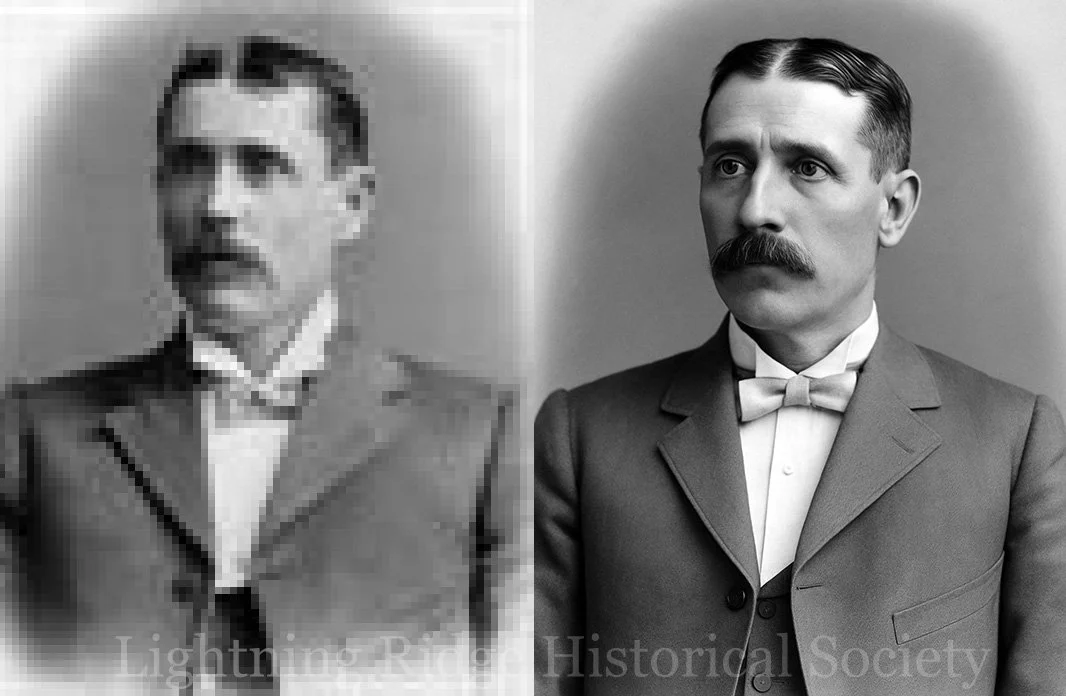Tom Brady
Left: A poor-resolution photograph of Tom Brady. Right: An extrapolation from the low-resolution image by DALL-E 3 artificial intelligence.
Thomas Peter “Tom” Brady was born in 1864 in South Australia, the son of Peter and Anne Brady. He married Henrietta Mackenzie at Wilcannia in 1898, and the couple had two daughters. Henrietta was a businesswoman at White Cliffs, running two shops that were destroyed by fire in 1910.
Brady started working in opal at White Cliffs, where he and his brother Phil held several leases from the 1890s through to the early 1900s. By 1909 the brothers had move across to Lightning Ridge, where they built one of the first substantial houses on the field, now known as The Walford House after a later resident. Brady quickly set himself up as an opal buyer and was described as “The Man with the Opal Eyes.” He had trained in gem cutting at Idar-Oberstein, Germany.
In 1910 Brady returned to White Cliffs after a period at the Ridge, and in 1911 he recovered from a serious illness. He later travelled to the United States, where he was a supervisor at the Panama-Pacific International Exposition in San Francisco in 1914.
Brady continued to buy opal at Lightning Ridge during the 1920s and made good offers for major stones, including the Light of the World found at Grawin in 1928. He also spent much of his time in South Australia, where he was the first established opal buyer at Coober Pedy. He was still buying opal up to six months before his death.
Tom Brady died at Adelaide on 16 August 1949, aged 85.
Article: Research by Leisa Carney, edited by Russell Gawthorpe. LRHS research compiled by Len Cram and Barbara Moritz. Sources: The Lightning Ridge Book, Stuart Lloyd, 1967, pp. 16, 108, 157, 240; They Struck Opal!, E. F. Murphy, 1948, p. 154; Walgett Spectator, 24 June 1920, 7 July 1911, 24 May 1929; Ion Idriess, Beverly Eley, 1995, p. 241; A Journey With Colour: A History of Lightning Ridge Opal 1873-2003, Len Cram, 2003, p. 105.

